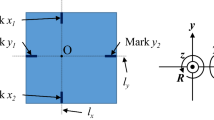Abstract
In this article, we report a simple and inexpensive approach to micromolding of complex, three-dimensional, high aspect ratio structures (with non-line-of-sight features) out of a high-strength amorphous metal. Inexpensive sacrificial silicon molds were created using lithography and etching techniques originally developed for integrated circuit production by the microelectronics industry and later adopted for microelectromechanical (MEMS) manufacturing. Multiple silicon layers were stacked, and the metallic glass was forced into the cavities under heat and pressure in an open air environment. Following cooling, the metallic structures were released by etching the silicon away in a potassium hydroxide (KOH) bath. Process studies showed that temperature is the most significant variable governing mold-filling. Transmission electron microscopy (TEM) sections of the mold/glass interface showed successful replication of features with characteristic dimensions on the order of 10 nanometers and no discernible gap between the silicon and the metallic glass. This scalable micromolding process leverages the inexpensive and readily available aspects of silicon lithography to economically support the mass customization (low volume production) of metal microcomponents without elaborate infrastructure needs.
Similar content being viewed by others
References
J. Bustillo, R. Howe, and R. Muller: Surface micromachining for microelectromechanical systems. Proc. IEEE 86, 1552 (1998).
D. Reynaerts, P. Heeren, and H. Van Brussel: Microstructuring of silicon by electro-discharge machining (edm). 2. Applications. Sens. Actuators, A Phys. 61, 379 (1997).
B. Bhattacharyya, J. Munda, and M. Malapati: Advancement in electrochemical micro-machining. Int. J. Machine Tools Manufact. 44, 1577 (2004).
S. Michaelis, H. Timme, M. Wycisk, and J. Binder: Acceleration threshold switches from an additive electroplating mems process. Sens. Actuators, A Phys. 85, 418 (2000).
A. Peker and W. Johnson: A highly processable metallic-glass- Zr41.2Ti13.8Cu12.5Ni10.0Be22.5. Appl. Phys. Lett. 63, 2342 (1993).
Y. Kim, R. Busch, W. Johnson, A. Rulison, and W. Rhim: Metallicglass formation in highly undercooled Zr41.2Ti13.8Cu12.5Ni10.0Be22.5 during containerless electrostatic levitation processing. Appl. Phys. Lett. 65, 2136 (1994).
R. Busch, Y. Kim, and W. Johnson: Thermodynamics and kinetics of the undercooled liquid and the glass-transition of the Zr41.2Ti13.8Cu12.5Ni10.0Be22.5 alloy. J. Appl. Phys. 77, 4039 (1995).
X. Lin and W. Johnson: Formation of Ti–Zr–Cu–Ni bulk metallic glasses. J. Appl. Phys. 78, 6514 (1995).
K. Ohsaka, S. Chung, and W. Rhim: Specific volumes of the Zr41.2Ti13.8Cu12.5Ni10.0Be22.5 alloy in the liquid, glass, and crystalline states. Appl. Phys. Lett. 70, 726 (1997).
J. Lu, G. Ravichandran, and W. Johnson: Deformation behavior of the Zr41.2Ti13.8Cu12.5Ni10.0Be22.5 bulk metallic glass over a wide range of strain-rates and temperatures. Acta Mater. 51, 3429 (2003).
W. Klement, R. Willens, and P. Duwez: Non-crystalline structure in solidified gold-silicon alloys. Nature 187, 869 (1960).
W. Johnson: Bulk metallic glasses—A new engineering material. Curr. Opin. Solid State Mater. Sci. 1, 383 (1996).
A. Masuhr, R. Busch, and W. Johnson: Thermodynamics and kinetics of the Zr41.2Ti13.8Cu10.0Ni12.5Be22.5 bulk metallic glass forming liquid: Glass formation from a strong. J. Non-Cryst. Solids 252, 566 (1999).
A. Masuhr, T. Waniuk, R. Busch, and W. Johnson: Time scales for viscous flow, atomic transport, and crystallization in the liquid and supercooled liquid states of Zr41.2Ti13.8Cu12.5Ni10.0Be22.5. Phys. Rev. Lett. 82, 2290 (1999).
Author information
Authors and Affiliations
Corresponding author
Rights and permissions
About this article
Cite this article
Bardt, J.A., Bourne, G.R., Schmitz, T.L. et al. Micromolding three-dimensional amorphous metal structures. Journal of Materials Research 22, 339–343 (2007). https://doi.org/10.1557/jmr.2007.0035
Received:
Accepted:
Published:
Issue Date:
DOI: https://doi.org/10.1557/jmr.2007.0035




